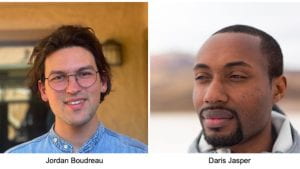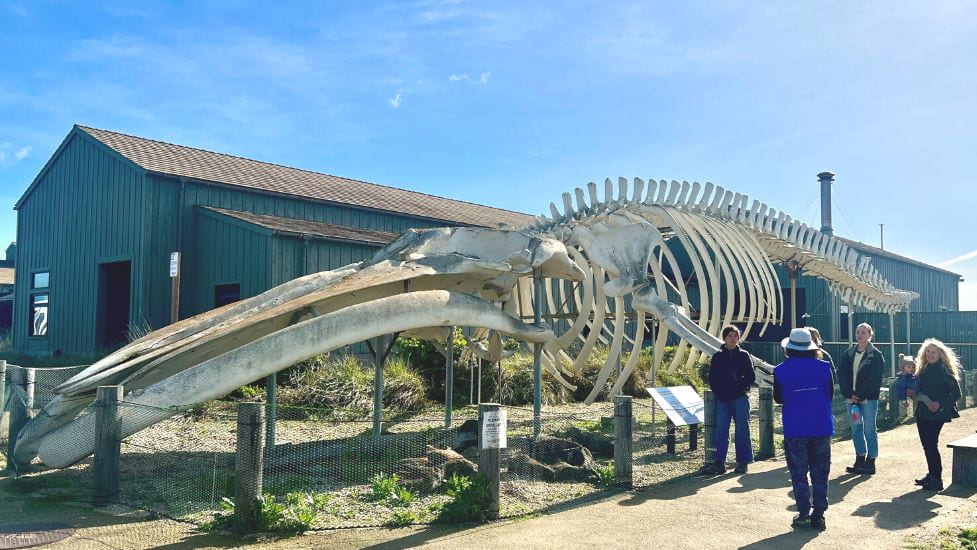As I wrote this letter, I got a call from Nik Strong-Cvetich, CEO of the local nonprofit Save the Waves. He called to tell me that a chunk of the cliff at Steamer Lane had collapsed. His call intensified the urgency of the following question:
What role does Seymour Center play in responding to the impacts of climate change in our coastal community?
We’re raising the money, assembling the people, and testing new experiences to answer that question.
Raising the money
Three cheers to the UC Santa Cruz Office of Research! They granted us $500,000 to amplify the work of the new Center for Coastal Climate Resilience. This money will help us communicate the Center’s world-leading coastal climate science. It will also give people in the community a chance to understand and act on solutions to recent storms, wildfires, impending freshwater shortages, and other problems.
Assembling the people
With the grant, we added to our already-brilliant team by hiring two powerhouse experience designers. Please welcome our new Associate Directors of Community Engagement, Jordan Boudreau (who started on Jan 30) and Daris Jasper (who starts on March 2).

Daris and Jordan will design and deliver exhibits and public events to activate the Seymour Center. Under their leadership, we will invite and welcome the community to Seymour Center to discover the science behind the coastal climate issues most relevant to our community. Daris and Jordan’s upcoming events and exhibits will surface and accelerate science-backed solutions. Together, we’ll connect local families and students to the next steps in their personal, local conservation journeys. All of this in a vibrant, welcoming, inclusive community gathering space.
Testing experiences
On the Move is live at the Seymour Center. This is our latest exhibit-experience designed to invite visitors into the nitty-gritty side of science. Visitors can build their own tags and try attaching them to proxy animals. They get to see real, sometimes real-time data that scientists produce with their tags. Finally, visitors can take action to help shipping vessels slow down in whale migration routes.
Each of these components are intentional prototypes of experiences we developed as part of our visitor experience planning effort last fall. We’re asking ourselves all kinds of questions to understand what works and what doesn’t. Who interacts with these experiences and how? What do participants take away? What do they learn? What we gleen will guide the design of experiences we bring to the Seymour Center moving forward.
In Youth Education, Kevin Keedy and Dana Neel are piloting a new tool called Climate-Smart Actions. In line with our solutions- and action-oriented programming, Climate Smart Actions give kids things they can do when they get home to make a difference right here in our community.
We’re testing event experiences, too. Led by Emily San Nicolas, we’re piloting a program called Venue Grants. We invited four local groups, all working on a different component of our community’s climate response, to host public events here over the next few months: Land Trust of Santa Cruz County, Save the Waves, Bike Santa Cruz County, and the UCSC People of Sustainability Collective.
Student-employee Alexis Rodriguez initiated a student-led Earth Day Drag Ball with support from Cameron Ohlson and Emily San Nicolas. This is an event designed by UCSC students for UCSC students.
Finally, we’re experimenting with a rapid-response event in partnership with the grassroots group, Save West Cliff. On Monday, Feb 13, we partnered on hosting a watch party for a forum the City of Santa Cruz, to gather community input about the future of West Cliff Dr.
So, what do YOU think Seymour Center’s role is in responding to the impacts of climate change in Santa Cruz?
I’d love to hear from you. Please email me at jahicken@ucsc.edu or text me at 858.228.7187
Best,
Jonathan


